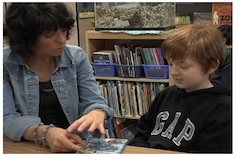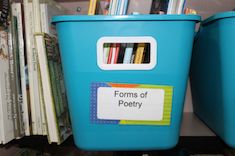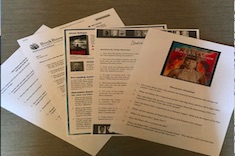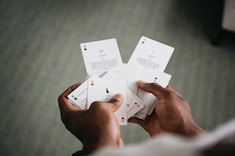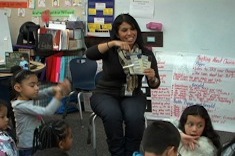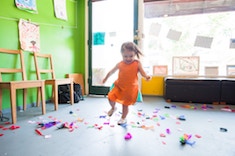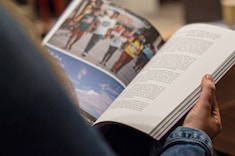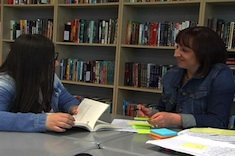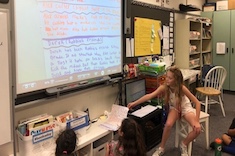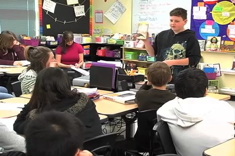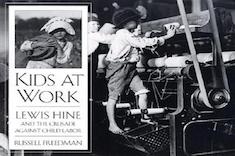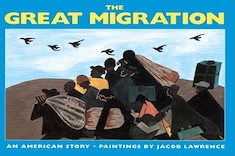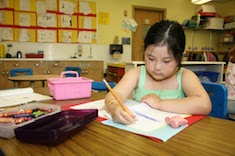Articles
Here is where you’ll find all the latest print features from our contributors. If you’d like to browse specifically by grade level, topic, or contributor, you can use the links in the right sidebar.
Latest Content
Beyond Plot: Conferring with Ian
Andrea Smith confers with fourth grader Ian, who is plowing through a book series. She helps him look at the bigger picture of characters, themes, and how the series might end.
Reset
Christy Rush-Levine finds her students sometimes need to stop and be challenged to think in more positive ways about their reading abilities. She describes how she designs minilessons for impromptu resets in her middle school classroom.
When Students Set Intentions
When students set intentions, reflection and celebration go hand in hand. Melanie Meehan explains how teachers can help students become more explicit about intentions with practical cues from bulletin boards and index cards.
Sharing Writing in a Class Celebration
Do celebrations matter? If you know Ruth Ayres, you know her answer is always a resounding YES. Here are her best tips for sharing writing in a class celebration.
The Power of Similes
If you want stronger poetry from students, a good starting point might be to explore how to write a powerful simile. Gretchen Schroeder explains how she helps her high school students play with and create better similes.
Past Midnight
Shirl McPhillips shares a poem she’s written about her grandmother Eva, and the fragments of memory that inspired it.
Poetry Connections
Poetry writing always has the potential to spark some magic in students. Christy Rush-Levine finds this magic requires a few conditions to be in place first in her middle school classroom.
Hidden Treasures
Matt Renwick describes the process of paying attention to telling details, and gives practical advice for teaching this skill to young writers.
The Third (or More) Time Is the Charm
Gretchen Schroeder finds helping her students see the value in rereading poems is all about helping them pay close attention to imagery.
Being a Teacher Writer Is More Than Being a Teacher Who Writes
Ruth Ayres explains how the distinction between writers and teachers who write is subtle but essential for understanding mentoring in workshops.
Pick a Poem
David Pittman delights in a student’s enthusiasm for poetry, leading him to reflect on how teachers often need to overcome their own negative history with poems to spark student love of the genre.
Readers’ Guides: Helping Students Think About Informational Text
Suzy Kaback finds the task of creating readers’ guides helps students in the intermediate grades think about evidence in texts in more sophisticated ways.
Hunting for Textual Evidence
Gretchen Schroeder finds just telling her high school class to include textual evidence when making points and arming them with sticky notes leaves many students bewildered. She regroups and comes up with activities to scaffold their understanding of what makes for valid evidence.
Shoulders-Down Spaces
Suzy Kaback feels rising unease as a tourist in unfamiliar neighborhoods. The experience provokes empathy for students who find classrooms strange or uncomfortable.
The Right to Be Seen
Stella Villalba is at a loss when a teacher is hostile to a new English language learner in her classroom. She considers the unspoken challenges of welcoming students who may never have been in school before.
Teaching Tone: Deal Me In
Gretchen Schroeder’s high school students are surprised to see a deck of cards on their supply list. The cards are a tool for teaching the vocabulary of tone in creative ways.
Retelling and English Language Learners
Retelling is an essential skill many English language learners struggle with. Stella Villalba finds tackling vocabulary in context is the key for many.
Word Walls in Preschool? Yes, You Can!
A word wall in preschool?! Shari Frost helps a teacher meet this impossible edict, and has a lot of fun in the process thinking about how our youngest learners acquire word knowledge.
Fear of Reading
Gretchen Schroeder reflects on why some of her students have developed a fear of reading by the time they reach high school.
High Standards and Struggling Learners
Mark Levine explains why high standards can be helpful even for students who are struggling in his middle school classroom.
Conferences Between Middle School Parents and Teachers
Parents of middle school students are often bewildered at how best to deal with their child’s unresponsiveness. Jennifer Schwanke explains how teachers can construct conferences with middle school parents that foster reflection, action, and shared goals.
Four-Step Reading Conferences
Christy Rush-Levine emphasizes “reflaction” in her reading conference protocol—reflection that leads to action for her students. Download the Reflaction (reflection + action) Form to use with students.
Student-Led Minilessons in Fifth Grade
Franki Sibberson initiates student-led minilessons, and finds the process takes her literacy workshops to a new level of independence and energy.
Student-Led Minilessons in Middle School
One student’s request to lead a minilesson is a catalyst for Mark Levine to see the value of student-led minilessons as an assignment for all in his middle school classroom.
Russell Freedman Book Clubs
Mark Levine finds Russell Freedman book clubs are a great way for his middle school students to deepen their understanding of history and empathize with young people who have lived through previous eras.
Expanding Black History Month Reading
A heavy sigh from a student is a cue to Shari Frost that he has heard the same Martin Luther King picture book biography one too many times in February. She shares her top picture book picks for expanding children’s awareness of black history all year long.
Picture Book Biographies
Stella Villalba shares some of her favorite new picture book biographies for bringing history to life for young learners, with a focus on perseverance.
Does the Pencil Still Have Power?
Ruth Ayres wonders if the pencil still has power, taking readers through a whirlwind history of the writing tool in her life, schools, and the world.
Ohana Means “Family”
Suzy Kaback is startled to see a picture of her deceased father on the wall when she visits her daughter’s seventh-grade classroom. It’s the start of learning about the power of ohana in schools.
Message from the Moon
Shirl McPhillips crafts a message from the moon about tone in poetry and school in her latest poem and companion essay.
Browse Content By
Type
Category
- Assessment Tools
- Big Fresh Archives
- Booklists
- Choice Numeracy
- Classroom Design
- Common Core
- Community Building
- Conferring
- Content Literacy
- Digital Literacy
- English Language Learners
- Equity
- Family Relations
- Free Samples
- Guiding Groups
- Leadership
- Literacy Coaches
- Mentor Texts
- Minilessons
- New Teacher Mentors
- Podcasts
- Poetry
- Quote Collections
- Reading Strategies
- Self Care
- Struggling and Striving Learners
- Talking and Listening
- Teacher Study Groups
- Teaching Reading
- Teaching Writing
- Word Study and Vocabulary
Author
- Melissa Quimby
- Nawal Qarooni
- Gwen Blumberg
- Julie Cox
- The Lead Learners
- Hannah Tills
- Josie Stewart
- Ruth Metcalfe
- Mallory Messenger
- Becca Burk
- Jodie Bailey
- Vivian Chen
- Mary Brower
- Tiffany Abbott Fuller
- Stephanie Affinito
- Ruth Ayres
- Leigh Anne Eck
- Heather Fisher
- Shari Frost
- Julie Johnson
- Suzy Kaback
- Gigi McAllister
- Shirl McPhillips
- Melanie Meehan
- Cathy Mere
- Debbie Miller
- Tara Barnett and Kate Mills
- Tammy Mulligan
- Dana Murphy
- Bitsy Parks
- David Pittman
- Brenda Power
- Heather Rader
- Matt Renwick
- Mandy Robek
- Christy Rush-Levine
- Gretchen Schroeder
- Jen Schwanke
- Brian Sepe
- Katherine Sokolowski
- Stella Villalba
- Jennifer Vincent
Grade Level
Choice Literacy Membership
Articles
Get full access to all Choice Literacy article content
Videos
Get full access to all Choice Literacy video content
Courses
Access Choice Literacy course curriculum and training

